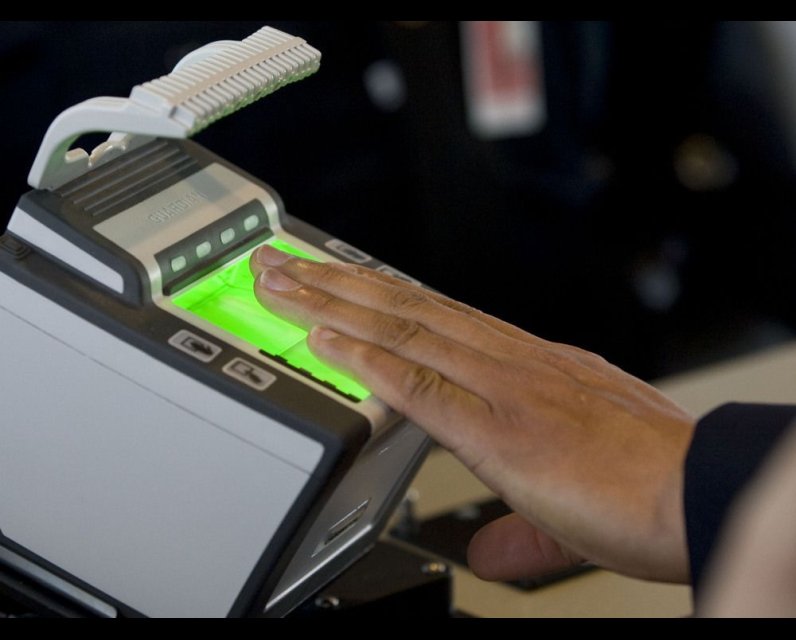What is biometric data and what countries require travellers to give it?

New Department of Homeland Security regulations in the United States will, beginning Dec. 26, require all non-citizens (including Canadians) to be photographed while entering or leaving the country.
The initiative is intended to build a comprehensive biometric data collection aimed at improving identity verification, combatting visa overstays and reducing passport fraud. The regulations note: “The best tool to combat passport fraud is to utilize the digital photos contained in e-passports to biometrically verify that a person who presents a travel document is the true bearer of that document.”
This is hardly the first or most intrusive measure when it comes to collection of biometric data at border crossings. Here’s what to know.
What is biometric data?From the Greek words for “life” and “measure,” biometrics basically refers to any measurement that sets one person apart from another — fingerprints, DNA, retina, even something as simple as height and weight. The word was first used in the late 19th century but has become much more common since the 1990s.
Are the U.S. rules a new measure?The specifics are new, but the U.S. (and a lot of other countries) have been engaged in this kind of information gathering for decades.
For instance, the United States Visitor and Immigrant Status Indicator Technology (or US-VISIT ) was implemented in 2003 and required visitors who required a visa to submit to the collection of biometric data. However, the program has been expanded in the years since to include almost all visitors.
Similarly, the NEXUS program between Canada and the U.S. uses retina scans, fingerprints and, more recently, facial recognition to identify frequent cross-border travellers between the two countries. That program started in 2000 with just a few hundred participants, but it has grown widely since.
What is Canada doing?In addition to being part of NEXUS, Canada has its own biometric information gathering systems. For instance, newcomers to Canada must submit a photograph and fingerprints (and a fee of $85) if they are applying for temporary or permanent residence, to extend a stay on a visa, or to claim refugee or asylum status.
There are exceptions, including those under the age of 14 or over 79. Notably, U.S. tourists entering Canada do not need to provide biometric information. The government of Canada has a website where visitors can determine if they are exempt.
Who else is doing it?It’s easier to ask who isn’t doing it. Almost every country on Earth collects some form of biometric data on visitors, and a large number gather data from those leaving as well as arriving.
In France, for instance, the PARAFE (or Passage Automatisé Rapide Aux Frontières Extérieures) lets citizens from Canada and many other countries use a “PARAFE airlock” to enter and exit the country. This is because Canadian passports contain biometric data in the form of an embedded chip, with the system reads and compares to the passport holder.
Canada has had such passports since 2013. The government notes that the only data stored on the chip is an electronic version of the photo that also appears on the passport.
Just this month, the European Union began using its new biometric entry/exit system (EES) for all arriving travellers from outside the “Schengen area”; a fancy term for the nations of the European Union, minus Ireland and Cyprus, but including Norway, Switzerland, Lichtenstein and Iceland. Canadians and others will need to provide fingerprints and photos as the system takes effect.
Also, Britain implemented an electronic travel authorization document for non-visa tourists (including Canadians) at the beginning of this year. Application requires a photograph, as well as a fee of 16 pounds, equivalent to about $30.
Is the collection of biometric data mandatory?Effectively, yes. You don’t need to provide it to nations that require it. But then they don’t need to let you in either. So if you want (or need) to travel to a country that demands it, there’s no way around it.
Are there issues with some countries?A 2021 survey by U.K.-based cyber security company Comparitech of countries’ use of biometric data at borders and elsewhere ranked China as the worst. It noted that the country has widespread and invasive use of facial recognition technology in CCTV cameras, in part to track and monitor the country’s Muslim and Uighur minorities.
It also noted “a concerning lack of regard for the privacy of people’s biometric data,” and raised concerns about “severe and invasive” collection of data.
However, it’s worth noting that China has recently exempted Canadian visitors from providing fingerprints when applying for a visa or entering the country — at least until the end of this year.
Also high on that list of countries, tied for fourth-worst alongside Saudi Arabia, the United Arab Emirates, Bangladesh, the Philippines and Uganda, was the United States.
“Most concerning is its lack of a specific law to protect citizens’ biometrics,” the study noted. “While there is a handful of state laws that protect state residents’ biometrics … this does leave many U.S. citizens’ biometrics exposed as there is no federal law in place. And this is despite the widespread and growing use of facial recognition in public places, biometrics within the workplace, and fingerprints for visas.”
At the other end of the scale was Turkmenistan, although the study noted that this was likely due to lack of development within the country: “For example, no known biometric database exists and the use of CCTV with facial recognition isn’t known.”
Should travellers be worried?Maybe. Some groups, such as the Ottawa-based International Civil Liberties Monitoring Group, have raised fears that data could be stolen, or that “mission creep” could result in biometrics originally taken for border-crossing purposes to be used more broadly, such as warrantless mass surveillance of citizens.
U.S. Customs and Border Patrol spokesperson Jessica Turner recently told Radio-Canada: “CBP is committed to its privacy obligations and has taken steps to safeguard the privacy of all travellers.” And in any case, it again comes down to whether one wants to follow another country’s rules to visit, or stay home.
Our website is the place for the latest breaking news, exclusive scoops, longreads and provocative commentary. Please bookmark nationalpost.com and sign up for our daily newsletter, Posted, here.


Comments
Be the first to comment